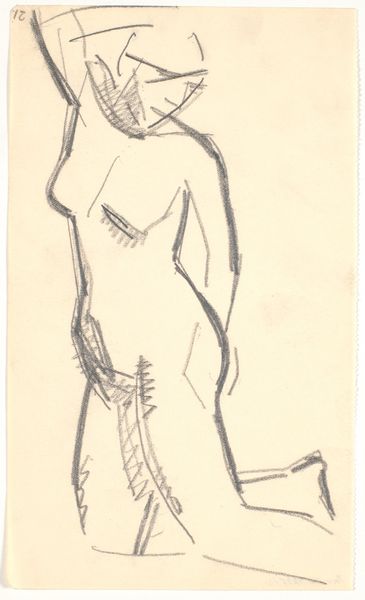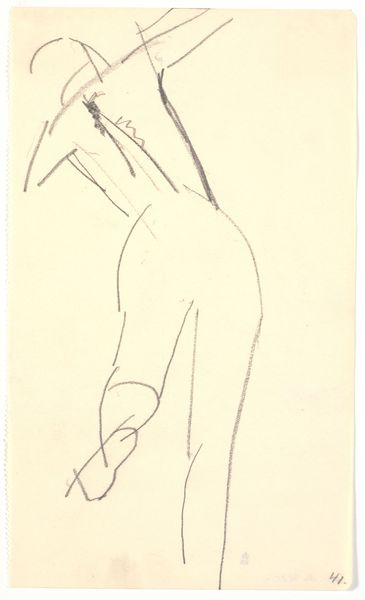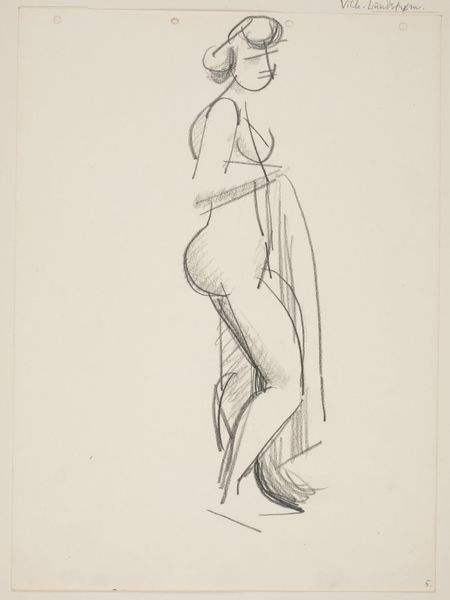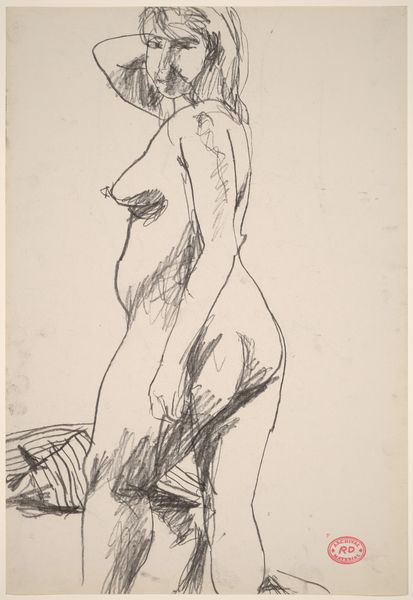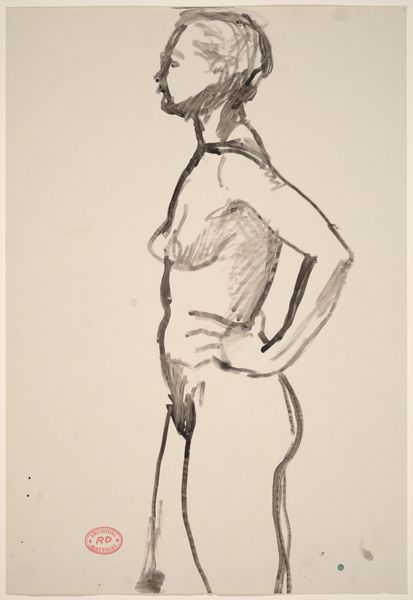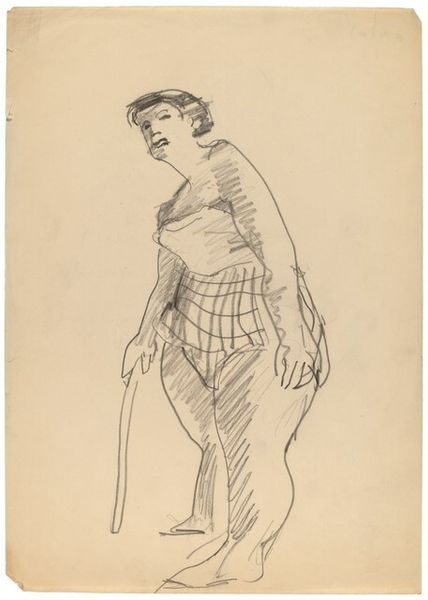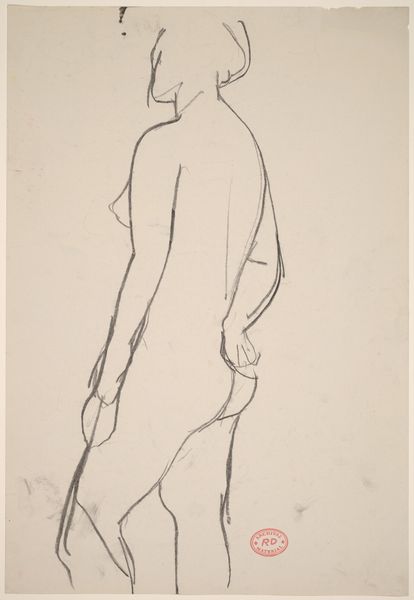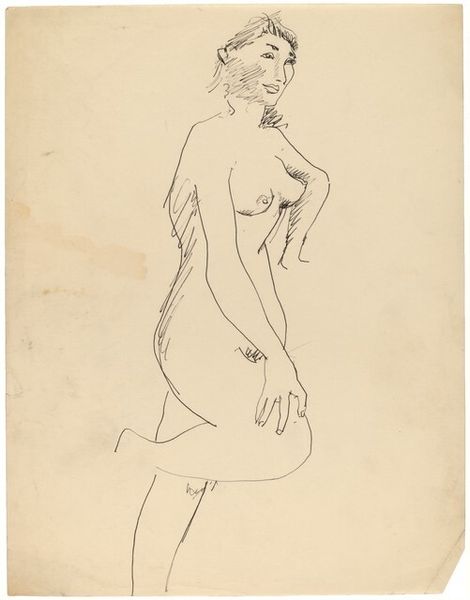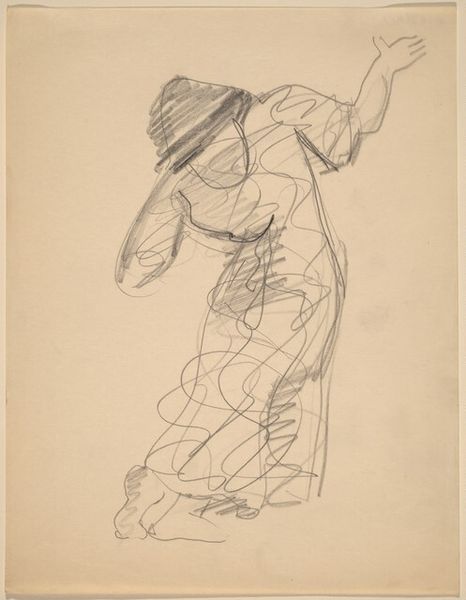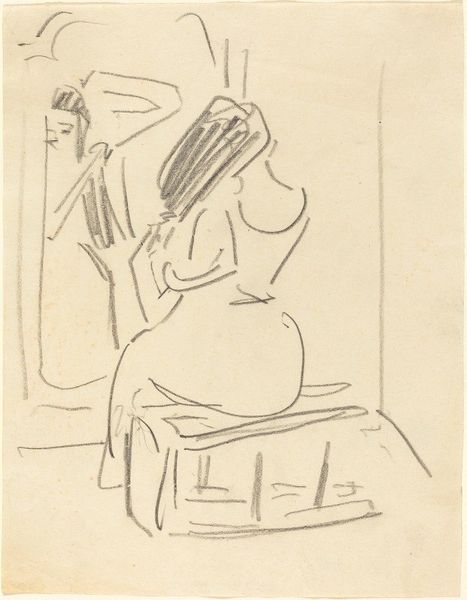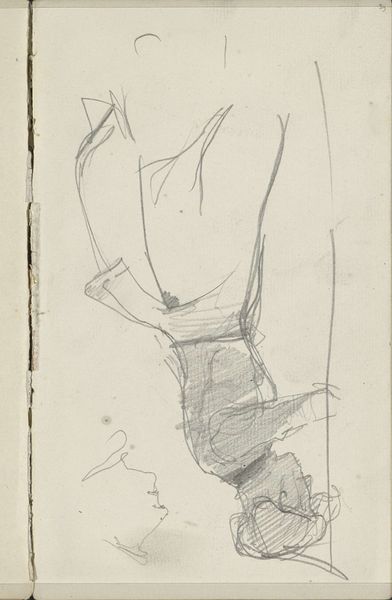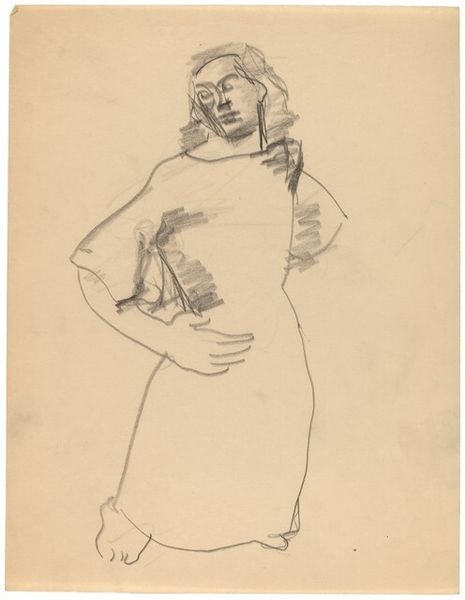
drawing, ink
#
portrait
#
drawing
#
figuration
#
ink
#
expressionism
#
line
#
portrait drawing
Dimensions: height 434 mm, width 305 mm
Copyright: Rijks Museum: Open Domain
Curator: This is Rik Wouters' "Standing Woman, Looking Out," an ink drawing created in 1915. It strikes me as rather melancholic, don't you think? Editor: Indeed. There’s a somber stillness despite the fluidity of the lines. She’s turned away, which somehow adds to a feeling of detachment, a longing for something beyond the visible. We need to consider the climate of that time... 1915. Europe was embroiled in the throes of the First World War. Curator: Exactly. As such, I think we can read it through a feminist lens; think about the wartime displacement of women from private spaces, their enforced engagement with politics through labor, protest, bereavement and mourning. This image invites us to think of the many constraints and exclusions placed on female artists in the modern period. Editor: It does speak volumes about the social role of women in that historical moment. The turn of the century saw art undergoing considerable change: expressionism emerging in direct relation to a broader context where the foundations of traditional Western culture and power were being challenged by thinkers, political and social activists and writers. How would you see expressionism playing into this artwork in particular? Curator: I think expressionism in this context allowed for new forms of subjective experience. It becomes not simply a drawing, but a physical record of that liminal space the model occupies between the private and public sphere, allowing for this modern woman’s gaze and interiority. The sketchy, almost frantic lines create an unsettling effect. It’s more than just a likeness; it conveys a state of mind. Editor: I agree entirely. And from the historical perspective, placing Wouters’ work within the context of his artistic circle also matters. His engagement with other expressionists helps us appreciate this work’s aesthetic innovation, but also see that the public and personal can seldom be untwined. Curator: Right, understanding how the sociopolitical factors affected artists allows us to re-evaluate how different audiences have looked, received and valued that art at various moments in time. The work really demands that we think about the woman depicted not simply as the passive model of an art drawing, but as someone dealing with an epoch-making shift in political life. Editor: This has allowed me to appreciate this artwork in a completely new and meaningful way. I can understand how that period of war brought a huge shift in perspective on social order. Curator: And for me, situating "Standing Woman, Looking Out," within these different theoretical frameworks, reveals even greater value of an artist committed to creating dialogue through their drawing, that extends far beyond its aesthetic.
Comments
No comments
Be the first to comment and join the conversation on the ultimate creative platform.
